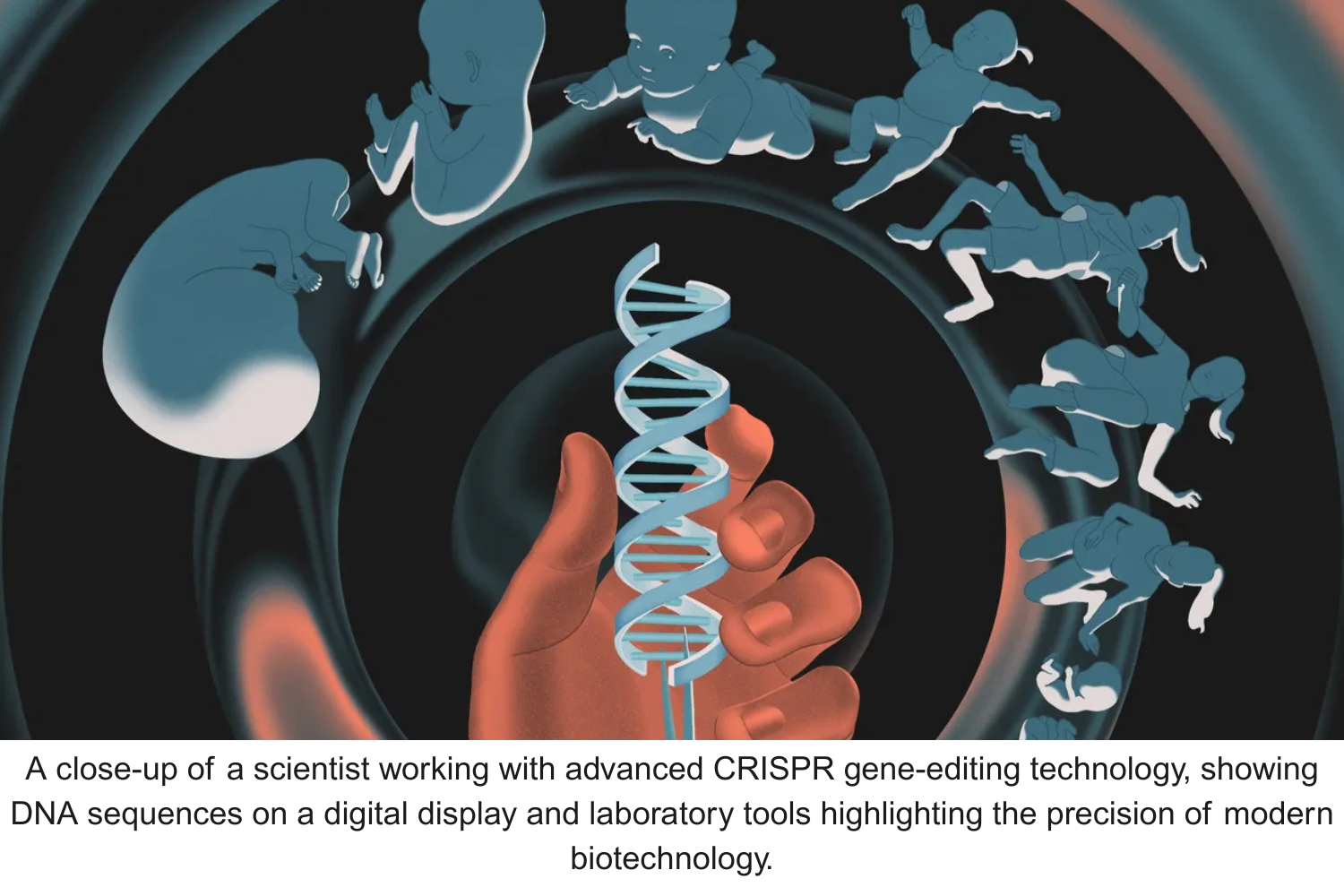Gene editing has become one of the most transformative scientific breakthroughs of the 21st century, redefining what it means to control the very blueprint of life. At the heart of this revolution lies CRISPR-Cas9, a powerful tool that allows scientists to cut, modify, and rewrite DNA sequences with unprecedented accuracy.
From curing genetic disorders to engineering disease-resistant crops, CRISPR is reshaping medicine, agriculture, and biotechnology. But alongside its potential for innovation come profound ethical debates—questions about human enhancement, designer babies, and the consequences of altering nature at its core.
This article explores the CRISPR-Cas9 mechanism, highlights groundbreaking medical and agricultural applications, examines real-world success stories, and addresses the controversies shaping the future of gene editing.
Understanding CRISPR-Cas9: How It Works
The CRISPR-Cas9 system originated as a natural defense mechanism in bacteria, helping them fight off invading viruses. Scientists adapted this process to create a revolutionary gene-editing tool.
Here’s how it works:
• CRISPR Sequences: These are short, repetitive DNA fragments found in bacteria, acting like a “genetic memory” of past viral infections.
• Cas9 Enzyme: Think of Cas9 as molecular scissors—it cuts DNA at precise locations.
• Guide RNA (gRNA): A programmable RNA molecule directs Cas9 to a specific DNA sequence.
• Gene Editing: Once Cas9 cuts the DNA, scientists can delete, insert, or modify genes as needed.
This level of precision has transformed genetic research. In contrast to older, slower methods, CRISPR allows scientists to make targeted changes quickly, cheaply, and reliably.
Quote: “CRISPR doesn’t just edit DNA—it edits possibilities, rewriting what’s possible for human health and agriculture.”
Breakthroughs in Medicine
Gene editing is revolutionizing healthcare, offering cures for conditions once thought untreatable. One of the most significant milestones came in treating sickle cell disease, a painful, life-threatening genetic disorder.
In 2023, a CRISPR-based therapy successfully modified a patient’s bone marrow cells, enabling them to produce healthy red blood cells. This landmark treatment, now moving toward broader clinical use, represents the first wave of curative gene therapies entering mainstream medicine.
Other breakthroughs include:
• Cancer Research: Scientists are developing CRISPR-engineered immune cells to target tumors more effectively.
• HIV Resistance: Researchers are exploring ways to delete the genes that allow HIV to enter human cells.
• Blindness Treatments: Early trials have used CRISPR to repair faulty DNA in patients with rare forms of inherited blindness.
Quote: “For the first time, medicine is moving beyond managing disease—we are learning to rewrite it at its source.”
CRISPR in Agriculture: Feeding a Growing World
CRISPR isn’t just revolutionizing medicine; it’s also reshaping the way we grow food. Traditional breeding methods are slow, taking years or decades to produce improved crop varieties. CRISPR accelerates this process dramatically.
Scientists are using CRISPR to:
• Develop drought-resistant crops to withstand climate change.
• Engineer disease-resistant plants without relying on chemical pesticides.
• Improve crop yields and nutritional content to combat global hunger.
• Create livestock resistant to viruses, reducing the need for antibiotics.
For example, researchers successfully edited rice genes to make them resistant to bacterial blight, one of the world’s most destructive crop diseases. In another breakthrough, CRISPR-engineered tomatoes were designed to boost vitamin D levels, addressing widespread deficiencies.
Quote: “With CRISPR, we’re not just feeding the planet—we’re redesigning the future of food.”
The Designer Baby Debate
Perhaps the most controversial aspect of CRISPR is its potential to modify human embryos. While editing genes to prevent serious diseases is one thing, altering traits like height, intelligence, or physical appearance crosses into deeply debated territory.
The controversy escalated in 2018 when a Chinese scientist claimed to have created the first CRISPR-edited babies, designed to resist HIV. The announcement triggered global outrage and raised questions about scientific responsibility, consent, and unforeseen consequences.
Key concerns include:
• Ethical Boundaries – Should scientists control which traits future generations inherit?
• Safety Risks – Off-target DNA edits can cause unexpected mutations or health issues.
• Genetic Inequality – Access to advanced gene editing could widen social divides.
• Long-Term Impact – Changes made today may affect countless future generations.
International regulatory bodies now strictly monitor embryo editing, but rapid technological advances continue to challenge existing policies.
Quote: “The line between therapy and enhancement is thin—and crossing it could redefine humanity itself.”
The Power and Responsibility of Gene Editing
While CRISPR offers astonishing potential, scientists, ethicists, and policymakers agree that responsible use is critical. Mistakes at the genetic level can have unintended, irreversible effects.
Strategies for responsible CRISPR use include:
• Strict international regulations to guide human genetic modification.
• Independent ethical review boards for sensitive experiments.
• Transparent public communication about risks and benefits.
• Investment in safety research to minimize off-target effects.
Balancing innovation with caution is essential to ensure CRISPR is used for humanity’s benefit, not harm.
Quote: “Science gives us power, but responsibility decides how we shape the world with it.”
Future Horizons: Where CRISPR Is Headed
The future of CRISPR holds staggering possibilities:
• Personalized Medicine – Custom gene therapies tailored to individual DNA profiles.
• Eradicating Genetic Diseases – Potential cures for disorders like muscular dystrophy or Huntington’s disease.
• De-Extinction Projects – Using CRISPR to revive extinct species like the woolly mammoth.
• Synthetic Biology – Engineering entirely new forms of life for energy, medicine, and materials.
Yet, CRISPR’s greatest promise lies in collaboration. By combining gene editing with AI-driven analytics, scientists can design therapies and crops faster than ever before, accelerating discoveries that were once unimaginable.
Quote: “CRISPR is not just a tool—it’s a new language for rewriting life’s code.”
Conclusion
CRISPR and gene editing represent a defining moment in scientific history. From curing diseases to transforming agriculture, its potential is immense. But with this power comes responsibility. Society must navigate complex ethical questions while embracing innovation that could save lives and reshape the planet.
The challenge ahead is finding the right balance—pushing the boundaries of what’s possible while safeguarding against unintended consequences.





.png)
.png)
.png)
.png)